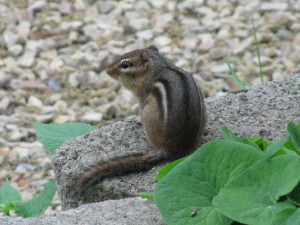by Winding Pathways | Aug 15, 2014 | Nature, Trees/Shrubs
We are lucky to have four species of oak trees on our property. Huge white oaks hug the north end with a few red oaks scattered between them. Two medium sized black oaks live close to the house and a young bur oak is just beginning to cast shade south of the house.
Millions of other homeowners are also fortunate to have oaks shading their property. They are one of the most widespread trees, and are beautiful, sturdy, valued by wildlife and long lived. A white oak could shade the ground and feed squirrels for up to 400 years. Some species, like red oaks, grow relatively quickly and tolerate moderate shade while most other oaks, like our bur, need full sun and grow slowly.
About 600 oak species are found naturally across the northern hemisphere. Approximately 90 species live in the United States. China boasts around 100 species, and Mexico is probably the world leader in oak diversity with at least 160 species. They have been widely planted in temperate regions including many places where they don’t occur naturally.
Oaks are members of the beech family with the genus name Quercus. It’s rather easy to distinguish an oak tree, but determining just what oak species a tree belongs to can be tricky. Many oaks hybridize with similar oak species and a tree may have characteristics of each parent. Sometimes the shape of an oak leaf near the top of a tree may be shaped differently from a counterpart lower down.
Non-showy oaks flower in mid spring about the time leaves appear. Male blooms are slim, drooping and green or tan in color. Each female flower is a solitary spike. People allergic to the wind borne pollen generally suffer in the spring.
Throughout history oak wood has been readily used by people. Even wine corks are made from the bark of Portuguese oaks. Oak was widely used in the construction of sailing ships. It’s said that the oak sides of the USS Constitution were so tough that British cannonballs bounced back. That’s where the nickname Old Ironsides came from! Oak is the traditional wood for liquor aging barrels but today it is most commonly used for hardwood flooring and furniture. Few woods produce more fireplace heat than oak.
Squirrels are just one of the wildlife species that love acorns. Among the host of other wild animals that relish acorns are deer, bears, woodchucks, wild turkeys and blue jays. However, oak leaves or acorns can be toxic to cows that eat too many. Tannin is the bitter element in oaks and acorns and long ago humans learned how to remove it to create delicious food. Each fall we look forward to harvesting acorns. Few foods are as delicious as maple syrup on warm acorn muffins.
Subscribe to Winding Pathways to learn how to process acorns into food.
For further Information
One of the most fascinating tree books ever written was published back in 1948. It is a two volume set by David Culross Perry. One volume covers trees of eastern North America while its counterpart describes western species. If you spot it for sale at a garage or used book sale snap it up.
Websites, apps and books abound that help identify and learn about trees. Our favorite websites are from the National Arbor Day Foundation at and the US Forest Service. Our favorite tree identification book is the Sibley Guide to Trees.
by Winding Pathways | Jul 14, 2014 | (Sub)Urban Homesteading, Chickens, Garden/Yard, Mammals, Nature, Pests

The charming but pesky chipmunk is an amazing forager and storer of food.
Wildlife sometime create yard mischief. Raccoons, possums, and skunks tip over trash cans in the middle of the night. Chipmunks tunnel under walls, moles heap mounds of dirt. And woodchucks and cottontails raid the garden.
Damage, or perceived damage, often infuriates homeowners. Woodchucks have the uncanny ability to harvest lettuce the day before it is to be picked for an evening salad, and raccoons raid the sweet corn patch the moment ears are ripe. Moles hump up hills of dirt that lawnmowers hit, and skunks mine into the sod for grubs. What’s a homeowner to do?
WHY WILDLIFE CAUSE PROBLEMS
There’s no mystery to it. Wild animals are attracted to yards because they are comfortable places to live or find food. All living creatures need food, shelter and water to live. Yards frequently offer these basic needs all in proximity. Create a beautiful diverse yard and wildlife will enjoy it as much as people. In most cases people love seeing most species of wildlife in their yards, but often agree that they are best enjoyed in moderation.
THREE STEPS TO CONTROL GARDEN WILDLIFE DAMAGE
There are three ways to effectively overcome, or at least minimize, wildlife damage.
Homeowners differ in their strategy on how they weigh the benefits versus problems of wildlife in the yard.
Strategy One: Tolerate damage and enjoy wildlife.
It’s a state of mind that may require attitude adjustment. How important is a perfect lawn or head of cabbage, versus watching a cottontail mom peacefully nurse her babies on the edge of the law? How valuable is the beauty and inspiration gained from seeing chipmunks pack their cheeks with seeds and scamper across the yard versus the tunnels they make in retaining walls? For many people having beautiful and interesting wildlife out the window far outweighs damage they may cause.
We had a friend who grew a tiny garden with a few lettuce plants, a short row of string beans, and one hill of summer squash. When a cottontail devoured them she was incensed and declared war on bunnies. She bought traps but never managed to catch them. She built a fence but the lettuce thieves found their way under it. Her stress level rose as plants disappeared.
We suggested she might rely on simple arithmetic to solve her problem.
“Instead of spending about a hundred bucks on fencing and traps, wouldn’t it be simpler and cheaper to just buy lettuce, squash, and beans at the farmer’s market”, we asked her. She agreed. It took some mental adjustment, but now she buys locally grown vegetables and enjoys watching the cottontails that she once hated.
SOMETIMES IT’S BEST TO JUST IGNORE MINOR DAMAGE AND ENJOY WILDLIFE.
Strategy two. Preventing damage in the first place.
The saying, “An ounce of prevention is worth a pound of cure,” holds true for wildlife damage. In most cases homeowners can both enjoy wildlife and prevent or greatly reduce damage critters might do. Some simple ways to anticipate and reduce conflict include:
Fencing: Craft fences sturdy enough to keep rabbits and woodchucks out of the garden. Cottontails, for example can jump a long ways horizontally but not high vertically. An inexpensive 18 “ tall temporary fence of chicken wire will keep them out of the garden. Woodchucks are more challenging, as they are expert diggers and climbers. A garden fence needs to extend below the ground to keep them out and needs to be at least three or four feet tall. Watch for more fencing specifics in future editions of Winding Pathways website.
Securing: Store trash cans inside the garage with the door closed to keep raccoons from tipping it over. Better yet, compost food scraps and don’t put anything in the can that will interest wildlife. Composting turns waste into a wonderful resource that improves the soil. Don’t let the trash man cart it away. Some people who prefer not to add meat scraps to the compost bin, feed them to a small flock of chickens or simply put them on the edge of the yard in the evening for the raccoons to devour. No more tipping over the trash can.
PREVENTION IS A KEY
Strategy three: Killing the offending animal.
Often people resort first to killing an animal. However killing a few woodchucks, raccoons, moles, or chipmunks will not solve damage problems. These animals are in the yard because they find perfect conditions there to live. Remove a few and others will move in. Keep killing and you’ve created a wildlife death trap.
Sometimes it is necessary to kill an animal. Upcoming issues of Winding Pathways will feature tips on how to eliminate problem animals.

